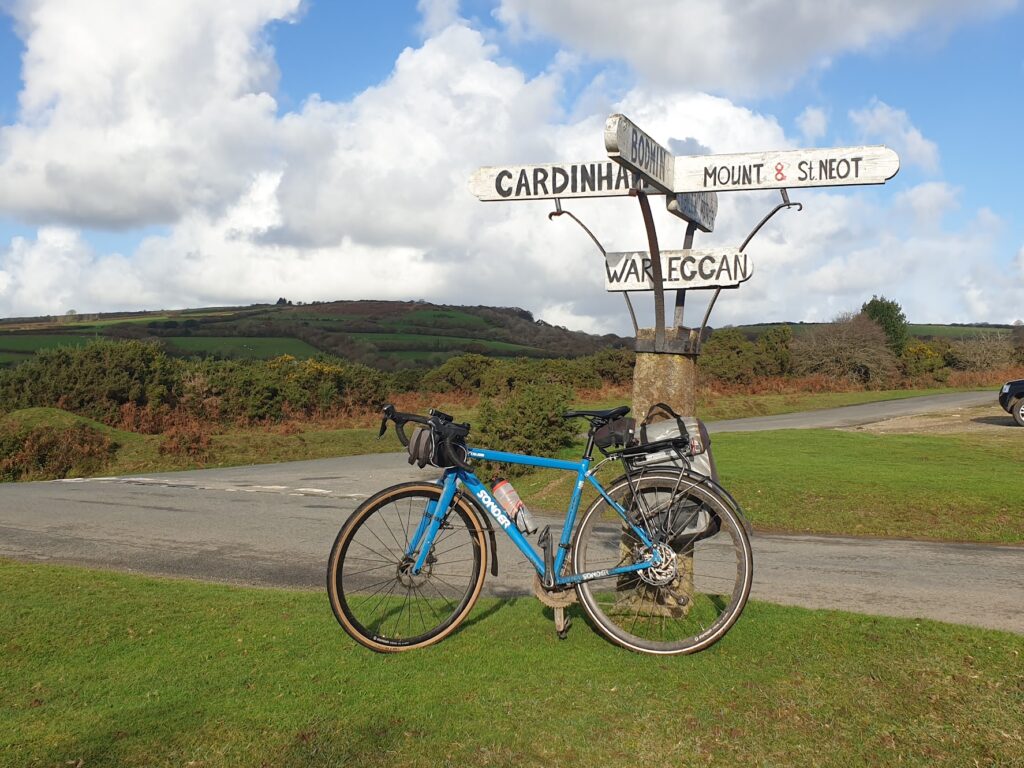
I went home after I reached Hastings on Sunday, with every weather forecast emphatically predicting an end to the amazing window of summer-like conditions I had enjoyed for five straight November days. The south west of England was apparently in for many straight days of wet and windy weather that held no appeal for me, now or any other time. I have learned that lesson. However, forecasts change. Another, shorter window of fine weather opened up unexpectedly. I made a snap decision on Wednesday evening to be on a train on Thursday to Newquay, on Cornwall’s Atlantic coast, and arrived in the evening to very strong winds. But, sure enough, this morning the sun was out and it stayed out all day. The breeze blew me eastwards and cycling was, once again, a true pleasure. Tomorrow is supposed to be the same in south Devon, where I will be cycling until my train home again. Three maps in two sun filled days at this time of year is a win. After that, frankly, it looks pants. I will be left with just two more maps to cross, the final pieces in my OS jigsaw puzzle. When I will return to Cornwall for that, I don’t yet know. But I will.
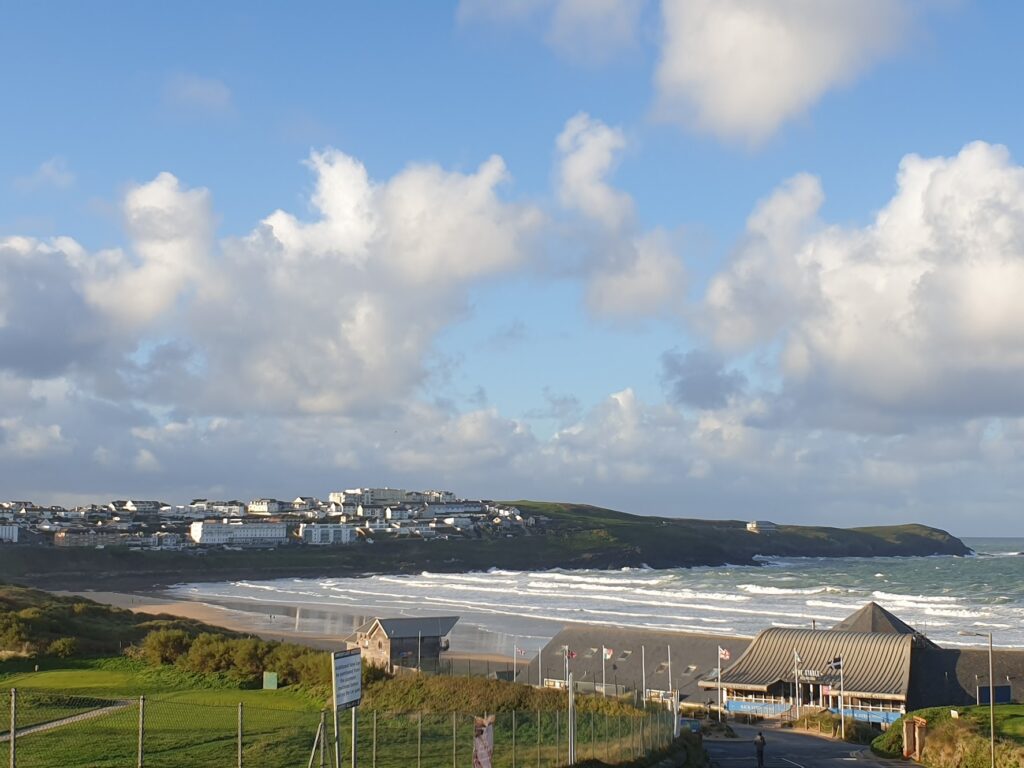
In the meantime, today was wonderful. Truly beautiful all day long, right until the very last rays of golden sunlight around 4.30pm. But by then I had arrived at my destination for the day, a lovely pub that turned out to be surprisingly high up in the southern reaches of Dartmoor National Park. And all the way from Newquay, all 60 miles and 6,800 feet of combined ascent, were a joy. My ride today, once I was clear of Newquay and its spectacular beaches, took me along very quiet country lanes almost all the way. The only exceptions were a couple of towns, Bodmin and Tavistock, which were both worth seeing. The bits in between were largely free from any traffic and in some parts had grass growing up the middle of the road. I spent a fair amount of time contained between hedges and with the autumn leaves and wet road surface from a lot of recent rain, I had to be careful, especially on my way down the many long, steep, winding descents. Cornwall and Devon are anything but flat. The most level sections were when I was high up, crossing the southern edge of Bodmin Moor. Here, the hedges gave way to open upland pasture and bronze coloured bracken. The views across the surrounding hills and valleys were vast and sweeping. Even up here it was warm in the sun; but not like last week. Whenever it disappeared behind a white, puffy cloud, the air took on a much crisper, fresher feel. This was more like it should be. But still, there were a lot of leaves remaining on the trees and the autumn colours in the bright light were delightful.
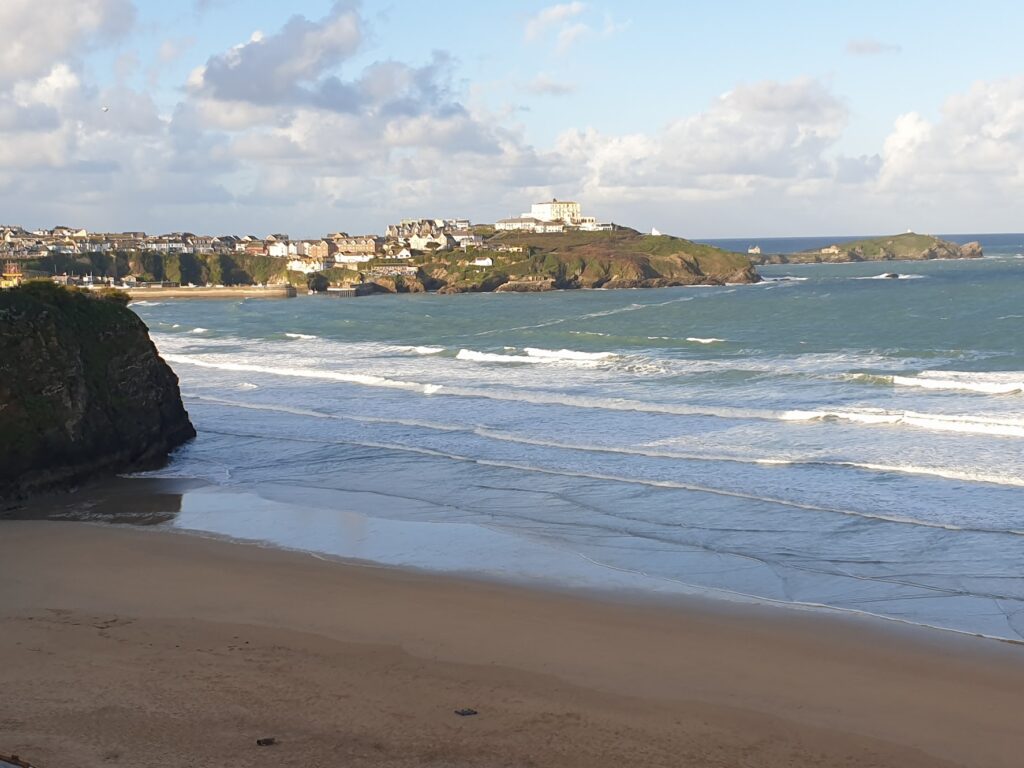
While I was enjoying all this, the north east of Scotland, where the rivers were so low when I passed though Royal Deeside in July, is now experiencing flash floods. A month’s worth of rain has fallen in a day. Trains and ferries have been cancelled. Rivers are reaching record levels. How things change, and what a difference a few hundred miles can make. This is just another example of extreme weather. The south of England, before the exotic temperatures of last week, experienced its wettest start to November on record. That came just days after a hosepipe ban was finally lifted following the very hot summer, which brought about long lasting drought conditions. Bizarrely, I have only seen green countryside throughout my trip. Starting in the far north of Scotland in May and coming slowly south really does seem to have worked well. I can only thank the OS for numbering their maps that way.
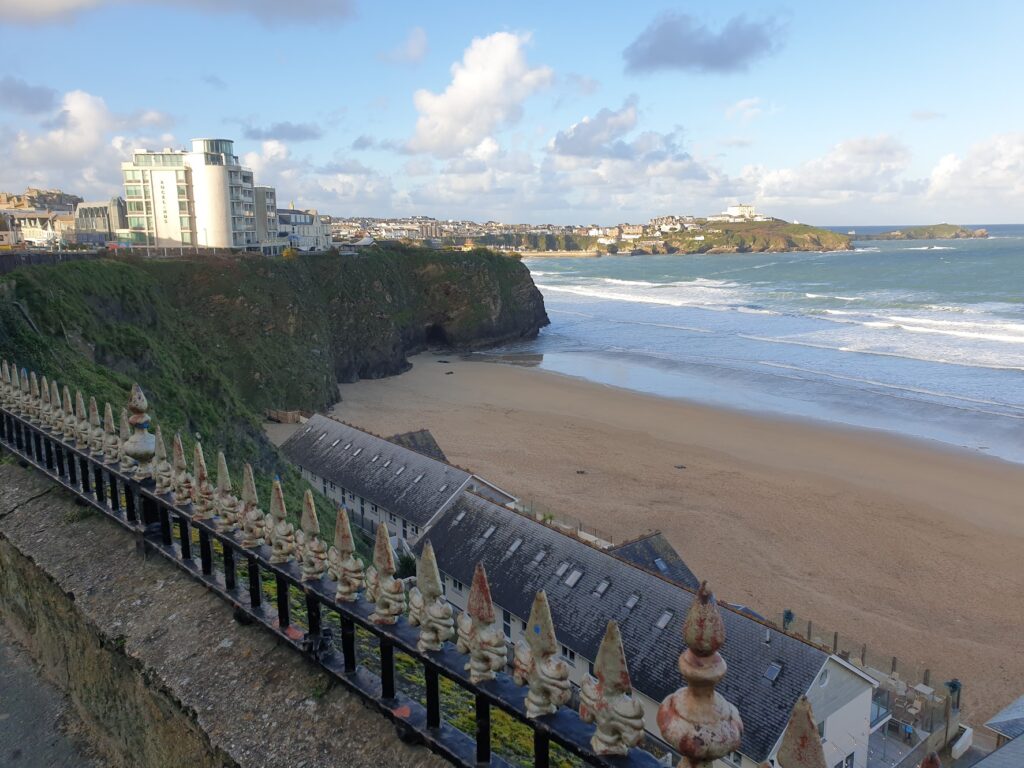
But back to today. In truth I didn’t pass through very many villages of note. One that did stand out was St Neot, which occupies a deep valley a few miles to the east of Bodmin. You could see why it was named National Village of the Year in 2004. It seemed to have a lot to like. The church was splendid and it sat next to a very appealing pub, the London Inn. It was free from busy roads; but close enough to towns when you needed them. I could happily come back for a pint or two, and get to know the area.
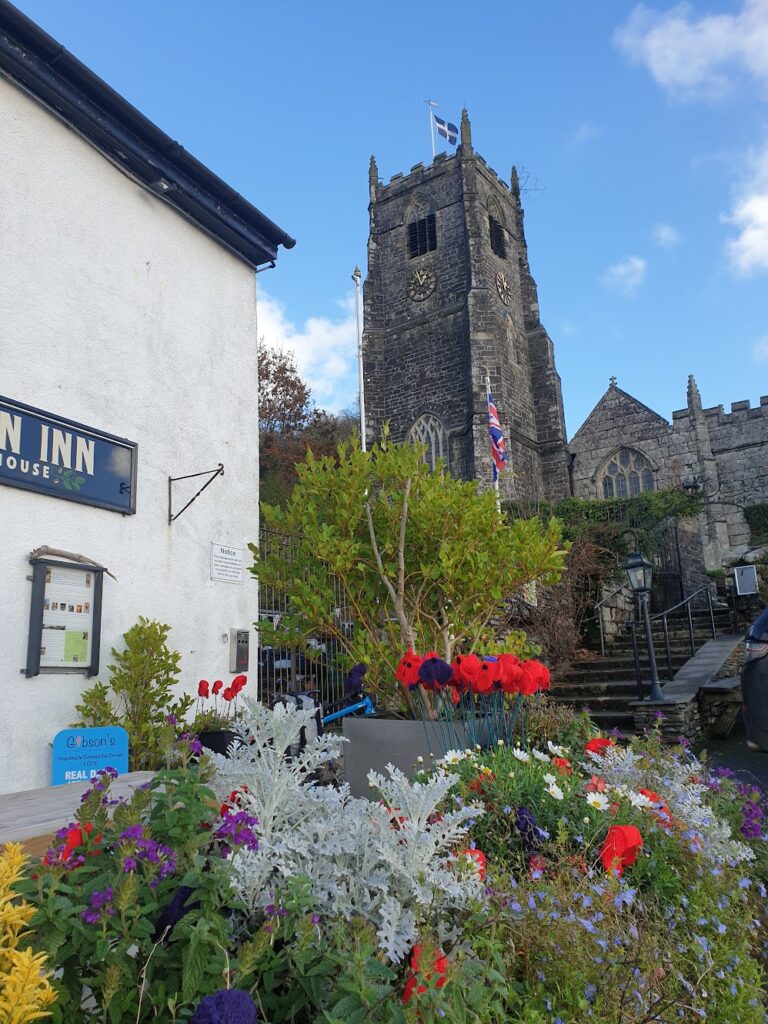
The competition judges don’t always get these things right. I was asked to lead the bid for my own village, Hathersage, a couple of years after the success of St Neot. I saw their green winner’s plaques, which were very reminiscent of ours. We won both our county and regional competitions and finished national runner up to Kirkby Stephen in Cumbria. Now, I have nothing against Kirkby Stephen. Indeed it is a very desirable place. But it is clearly not a village, which is where I have a problem. We was robbed! I have no such misgivings about St Neot. They can be justifiably proud of their success – and they clearly are, if their road signs are anything to go by.
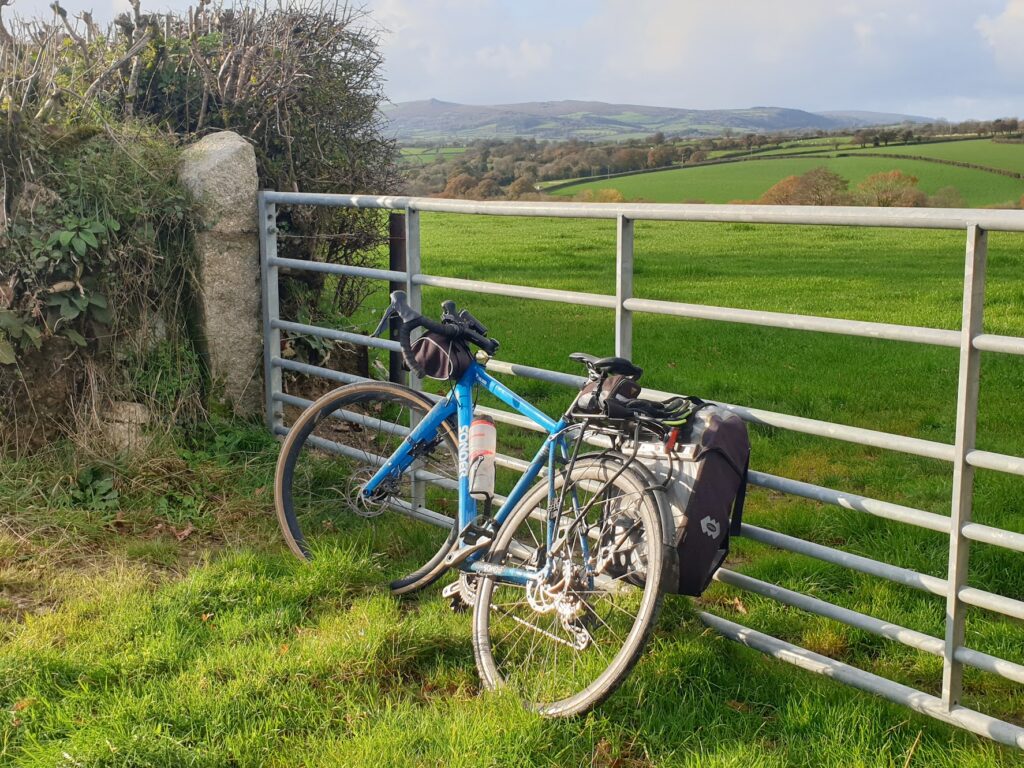
The other section of note was the Tamar Valley, which I crossed today at the first bridging point upstream from Isambard Kingdom Brunel’s famous Tamar Suspension Bridge (and its more modern adjacent twin), which carry the main road and rail links to Cornwall from Plymouth. Before that piece of Victorian engineering brilliance, the first bridge was an old, narrow stone affair at Gunnislake, a large village on the Cornish side. The valley here is a deep gorge and the main road plunges so steeply down the valley side as it heads north that they have put in an escape lane for any runaway vehicles. The River Tamar was high, due to the recent rain, but not particularly wide. I expected something more substantial from this natural regional and cultural boundary. It doesn’t quite cut Cornwall off from the rest of England altogether; but it certainly draws an unmissable line between the Celts of Kernow and the rest of us Anglo Saxons. Although Cornish is a dead language, it was once widely spoken and is clearly reflected in many of the local place names, which bear more resemblance to their Welsh counterparts than anything in England. I discovered today that Cornwall once had a monarch. King Doniert (also Donyarth or Dungarth) was the last of them and he drowned in the year 875. I saw an ancient engraved granite base for a Celtic memorial cross dedicated to him on Bodmin Moor today, dating from the late ninth century. That is evidence enough for me. No memorial, though, for King Mark of Cornwall, who features in the 6th century Arthurian legends. I’m sure, with a name like that, he must have been quite a guy.
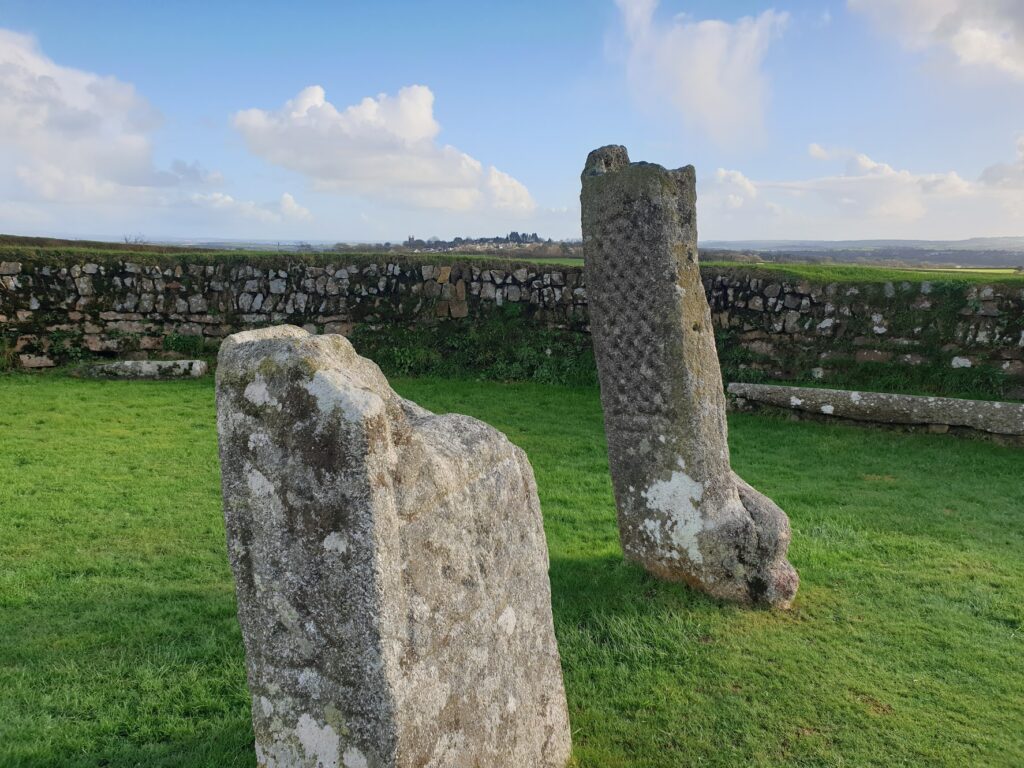
Anyway, I was now in Devon, and was immediately confronted with the climb back out of the Tamar Valley. The main road took a circuitous route for softies, keeping the gradient gentle. But a smaller lane went straight up the hill from the bridge, Roman style, and avoided the traffic. I have told many people this year that I prefer hills to traffic. Now was my chance to prove it. My road sliced across the less decisive main road where it snaked past half way up. I ignored it again, continuing my relentless climb. To be honest it was OK. I was happy with my choice. Besides, I only had one pannier today, instead of the usual two. Piece of cake.
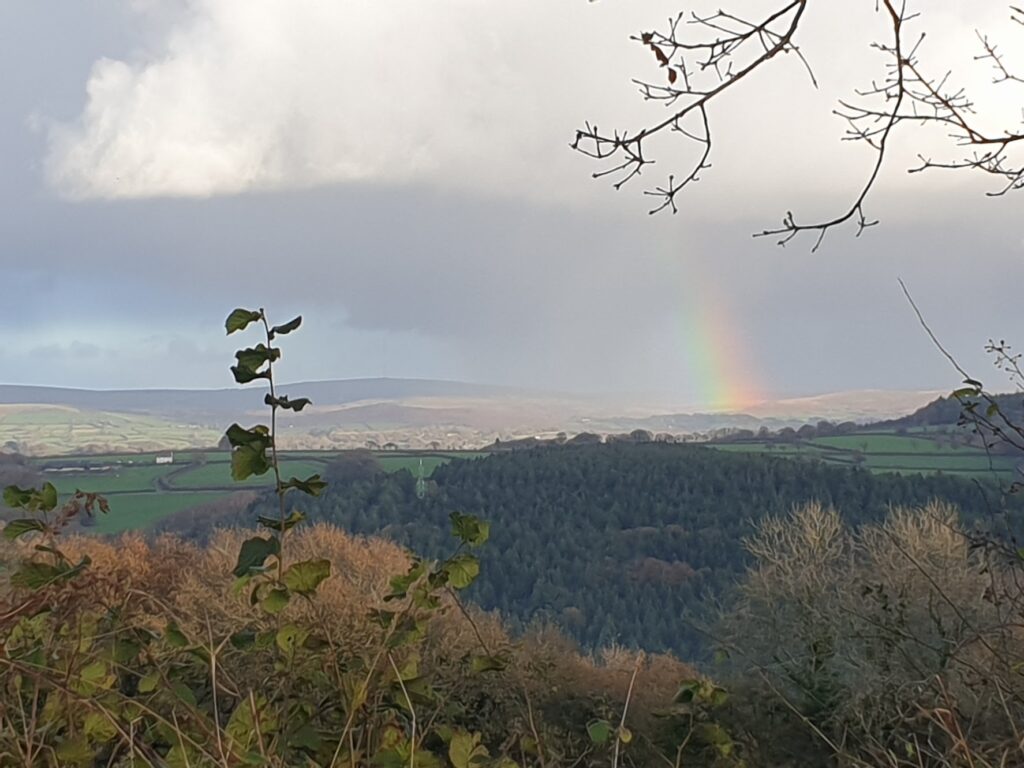
My reward was a long descent into the really attractive market town of Tavistock, which nestles in the valley of the River Tavy. The low afternoon sun was illuminating the fine buildings in the middle of town and it all seemed very appealing. People were even out playing tennis on this November day. I reckon they had at least half an hour of decent daylight left, and so did I. So I pushed on through more dormitory villages and was surprised, after a couple of miles to cross the boundary into Dartmoor National Park. My route then took me out of the valley and up onto the wide open moor, high enough to still be in the sun. I said hello to a few Dartmoor ponies and admired the rugged skyline before rolling in to the extremely comfortable Burrator Inn, in the upland village of Dousland, for the night. It had been a day worth travelling for, with the promise of more tomorrow. And I was past 200 maps. So close now. Really close….
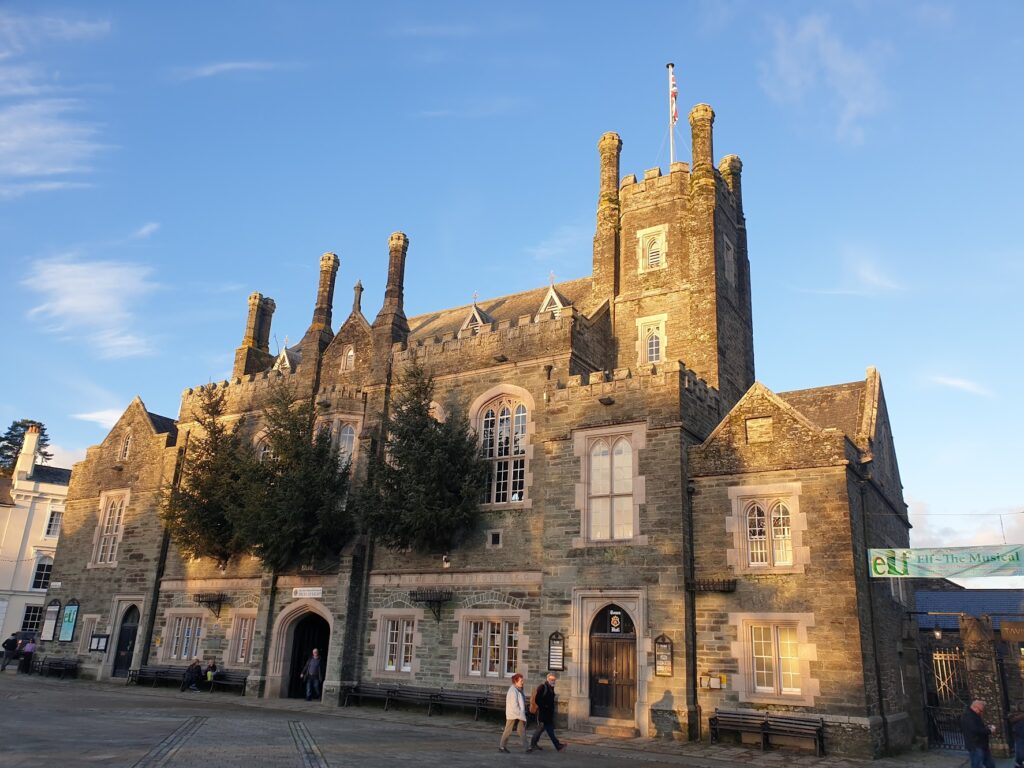

3 replies on “Maps 200 and 201 – Newquay to Dousland”
Seems like the snap decision is paying off. Sounds much nicer than here.
Hah, I see the Kirkby Stephen Affair is still a sore point! Am looking forward to the Final Two Maps, whenever that comes…
I shall miss the updates and the pictures drawn by your words when it’s over. Hope you get to enjoy the last 4 soon.